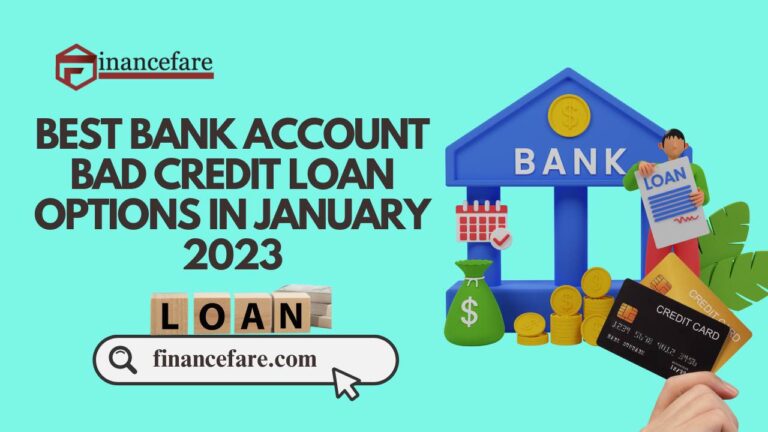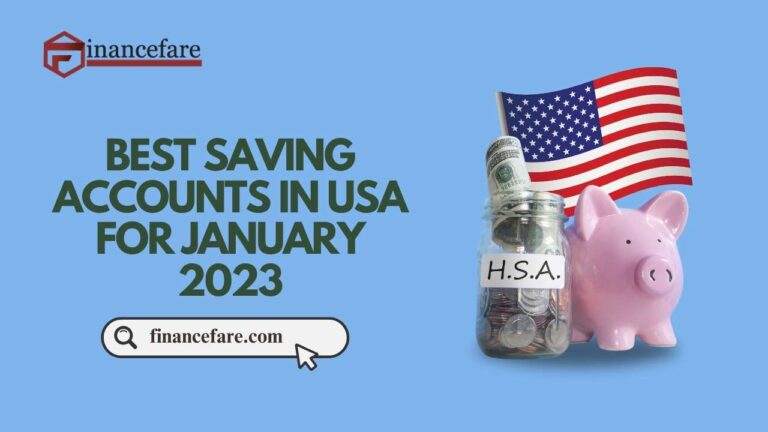It’s difficult to live in the modern world without a bank account.
Everything from investment commission accounts to digital wallets to real estate investments need ways to store and send money electronically. Good luck retiring without any of those tools.
That means if you don’t have any bank account yet, it’s time to open one. Read on to learn.
How to Open a Bank Account
It is easier than ever to open a bank account in just a few minutes now. Without visiting a bank branch, mostly time you can do so with the comfort of your couch. Follow these simple steps to open your account without minimal fuss.
1. Choose a Bank
First, you need to take decision where you actually want to open an account. Keep the following in mind as you choose the right bank for your requirements.
Types of Banks
Your first thought might be opening an account with a big bank that has many branches, such as Wells Fargo or Bank of America. Big banks provide some perks, such as massive ATM networks, partnerships with investment banks, and partnerships with international banks. If you like the opinion of in-person banking, consider a traditional bank.
If you choose the traditional banking experience but don’t like just another number, find out local banks and credit unions. While they don’t have the equal reach, these types of financial organization may provide lower fees or interest rates on loans. If visiting branches in person is essential to you, you can do that — and you might get extra personalized service at a same institution.
If you want to do all your banking work from your living room, find out online banks. These relative new comers have grown up extensively over the last decade. They often provide free banking services, lower interest rates on loans, and higher interest rates on savings accounts. They have also provided free or low-cost ATM access through partnerships with huge ATM networks or compensation for ATM withdrawal fees outside their networks.
What to Look in a Bank
You’re capable to decide which type of bank you want.
Decide before starting whether you really need access to nearby in-person bank branches. Then look each one bank’s ATM network or ATM fee compensation policy. Ensure you can conveniently pull cash from nearby ATMs with no fees.
If you travel to another country often, choose a bank that offers free ATM withdrawals in that country. Some banks do this through local partner banks or only by offering a decided number of international ATM fee compensations each year.
Next, check the bank’s online portal. You must see how user-friendly it is and what banking tasks it allows for you to do. For instance, does it allow automated recurrent transfers from your checking account to your savings account? Can you link accounts at other financial organizations?
Read some online reviews of every bank you think to get a sense for how banking expert rate them. Make sure for checking out our lists of the best free checking accounts and the best high-produce savings accounts. Finally, don’t forget about FDIC insurance. All respectable U.S. banks are insured by the Federal Deposit Insurance Corporation (FDIC), but you must still double-check that your preferred institution is among them.
2. Choose a Bank Account Type
Everyone must have at least one checking account and one savings account. But you do not need to open both accounts at the same bank.
Some people like the benefits of having both accounts available in their online banking portal, of course. Others like better to keep their savings accounts a little less reachable and visible. It is lessees the temptation to raid savings for nonemergency expenses.
Checking Account or Savings Account?
You should have a checking account for your day-to-day operating costs and monthly cash flow. Whenever you get salary in every time and goes out every time you pay a bill.
In mostly cases, you don’t earn interest on your checking account balance. That’s the reasons you shouldn’t deposit a big amount in your checking account. Your saving belongs somewhere else so that it’s protected from impetuous spending and can earn you a return.
You have need of a savings account to set to one side your emergency fund and goal-specific funds, such as a down payment to house. Don’t touch your savings in any situation other than its intended purpose.
What Should Look For When Comparing Accounts
I admire only thinking to check accounts with no monthly fee. The best checking accounts either have free overdraft conservancy or low overdraft fees.
Be careful that many banks allow “free checking” with an asterisk beside it. The fine print shows that you have to maintain a minimum balance to avoid a monthly conservation fee. Unless that minimum balance is lower that you’ll never run afoul of it, choose for truly free checking with no strings attached.
For savings accounts, the yield is the most crucial feature. You’ll see this advertised as APY, or yearly percentage yield. This is the percentage of your balance that the bank pays you in interest each year.
3. Review What You will require to Apply
The federal government heavily governs banks. Banks must follow complicate “Know Your Customer” laws to prevent money laundering and other bad behavior.
For opening a bank account, you will have to provide evidence of your identity, exclusive at least one government-issued photo ID. Banks ask your date of birth also, Social Security number, and proof of your address. That proof of residence could include a utility bill in your name, the document to your home, a wealth insurance policy, or other proof from a list they will provide you.
Pay attention that if you want to open a joint account or an account for a minor, you will have to provide the other account holder’s identifying information in addition to your own.
And, of course, you need an opening down payment. That could be nothing, such as $1. Or it could be more valuable, from $500 to $2,500 or more.
4. Visit a Branch or Apply Online
Mostly banks provide you create new accounts online nowadays, even traditional brick-and-mortar banks. Always, the online sites take just a few minutes. The website leads you through on a series form, asking you to fill out information like your name, date of birth, and address, and upload needed documents.
If you want to open an account with a traditional bank and like better dealing face-to-face in a branch, you can do that also. In any way, have your photo ID, proof of address, and other important documents ready.
5. Fund Your Account
If you open an account in individual, you can just give the opening down payment with cash, a money order, a check, or some other form of payment.
If you are opening an account online, it’s not as easy as passing an envelope of cash or writing a personal check. You can fund the opening deposit to link another bank account of yours and transfer the money electronically. Brokerage accounts also work for it, or if you have a rechargeable debit card, you may be capable to link the accounts for transferring money via ACH.
You can also deposit directly with your employer and use your next paycheck as your opening deposit.
If you don’t have any accounts that help you transfer funds electronically, you’ll have to fund your opening deposit by mailing in a money order or check. Your new bank will provide instructions if you choose for this over an electronic funds transfer.
6. Sign Up To Account Features
Once you’ve created your new bank account, you can start using the features that you want to use.
For instance, you might set automated recurrent transfers from your checking account to your savings account, scheduled for every payday. Or you might set notification warning to notify you if your balance drops below a fixed amount.
Mostly banks today provide a bill pay service, allowing you for set recurring automatically payments for your monthly bills. At least, you ought to be able to carry out one-click manual payments for saved payees.
You can also close paper statements in most of cases. This cuts down on your paper muddle and reduces waste and fuel usage from shipping.
Final Thought
As you find out bank options, you may choose banks that provide other attractive account types. That might include high-yield certificate of deposit (CD) accounts, or money market accounts, or small business checking accounts. Or it could mean best travel payoff credit cards, low-APR credit cards, or cash-back credit cards.
On the other hand, you might want particular technical features in a mobile banking app, such as mobile deposit for checks.
Take decision what features matter most to you, then start searching for accounts that fit the bill. In today’s market, you should have no problems finding plenty of worthy options.



